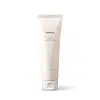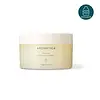What's inside
What's inside
 Key Ingredients
Key Ingredients

 Benefits
Benefits

 Concerns
Concerns

 Ingredients Side-by-side
Ingredients Side-by-side

Aloe Barbadensis Leaf Extract
EmollientGlycerin
HumectantPalmitic Acid
EmollientStearic Acid
CleansingLauric Acid
CleansingPotassium Hydroxide
BufferingWater
Skin ConditioningMyristic Acid
CleansingSodium Cocoamphoacetate
CleansingGlyceryl Stearate
EmollientSorbitan Olivate
EmulsifyingSodium Chloride
MaskingMelaleuca Alternifolia Leaf Extract
PerfumingAllantoin
Skin ConditioningPhenethyl Alcohol
MaskingCaprylyl Glycol
EmollientCitrus Aurantium Amara Leaf/Twig Oil
MaskingHelianthus Annuus Seed Oil
EmollientTocopherol
AntioxidantCitronellol
PerfumingCitrus Aurantium Bergamia Fruit Oil
MaskingPelargonium Graveolens Oil
MaskingArctium Lappa Root Extract
Skin ConditioningSymphytum Officinale Root Extract
Skin ConditioningMelaleuca Alternifolia Leaf Oil
AntioxidantGeraniol
PerfumingLimonene
PerfumingAloe Barbadensis Leaf Extract, Glycerin, Palmitic Acid, Stearic Acid, Lauric Acid, Potassium Hydroxide, Water, Myristic Acid, Sodium Cocoamphoacetate, Glyceryl Stearate, Sorbitan Olivate, Sodium Chloride, Melaleuca Alternifolia Leaf Extract, Allantoin, Phenethyl Alcohol, Caprylyl Glycol, Citrus Aurantium Amara Leaf/Twig Oil, Helianthus Annuus Seed Oil, Tocopherol, Citronellol, Citrus Aurantium Bergamia Fruit Oil, Pelargonium Graveolens Oil, Arctium Lappa Root Extract, Symphytum Officinale Root Extract, Melaleuca Alternifolia Leaf Oil, Geraniol, Limonene
Tocopherol
AntioxidantPrunus Armeniaca Kernel Oil
MaskingViola Odorata Oil
MaskingSorbitan Olivate
EmulsifyingOrbignya Oleifera Seed Oil
EmollientCitrus Aurantifolia Oil
CleansingPolyglyceryl-3 Caprate
EmulsifyingSorbitan Palmitate
EmulsifyingCitrus Aurantium Dulcis Peel Oil
MaskingEuphorbia Cerifera Cera
AstringentPelargonium Graveolens Oil
MaskingCedrus Atlantica Bark Oil
MaskingCetyl Palmitate
EmollientHelianthus Annuus Seed Oil
EmollientGeraniol
PerfumingPolyethylene
AbrasiveSorbeth-30 Tetraoleate
EmulsifyingPolyglyceryl-10 Oleate
Skin ConditioningBenzyl Benzoate
AntimicrobialPolyglyceryl-2 Sesquioleate
EmulsifyingCitronellol
PerfumingLimonene
PerfumingHydrogenated Vegetable Oil
EmollientLinalool
PerfumingAniba Rosodora Wood Oil
AstringentCitrus Aurantium Bergamia Fruit Oil
MaskingTocopherol, Prunus Armeniaca Kernel Oil, Viola Odorata Oil, Sorbitan Olivate, Orbignya Oleifera Seed Oil, Citrus Aurantifolia Oil, Polyglyceryl-3 Caprate, Sorbitan Palmitate, Citrus Aurantium Dulcis Peel Oil, Euphorbia Cerifera Cera, Pelargonium Graveolens Oil, Cedrus Atlantica Bark Oil, Cetyl Palmitate, Helianthus Annuus Seed Oil, Geraniol, Polyethylene, Sorbeth-30 Tetraoleate, Polyglyceryl-10 Oleate, Benzyl Benzoate, Polyglyceryl-2 Sesquioleate, Citronellol, Limonene, Hydrogenated Vegetable Oil, Linalool, Aniba Rosodora Wood Oil, Citrus Aurantium Bergamia Fruit Oil
 Reviews
Reviews

Ingredients Explained
These ingredients are found in both products.
Ingredients higher up in an ingredient list are typically present in a larger amount.
Citronellol is used to add fragrance/parfum to a product. It is often derived from plants such as roses. In fact, it can be found in many essential oils including geranium, lavender, neroli, and more. The scent of Citronellol is often described as "fresh, grassy, and citrus-like".
Since the Citronellol molecule is already unstable, Citronellol becomes irritating on the skin when exposed to air.
Citronellol is a modified terpene. Terpenes are unsaturated hydrocarbons found in plants. They make up the primary part of essential oils.
Citronellol is not able to be absorbed into deeper layers of the skin. It has low permeability,
Citronellol is also a natural insect repellent.
Learn more about CitronellolCitrus Aurantium Bergamia Fruit Oil is the oil from the bergamot orange. It is native to Italy.
This ingredient is used to add fragrance to products. It contains limonene, linalool, and linalyl acetate.
The term 'fragrance' is not regulated in many countries. In many cases, it is up to the brand to define this term. For instance, many brands choose to label themselves as "fragrance-free" because they are not using synthetic fragrances. However, their products may still contain ingredients such as essential oils that are considered a fragrance.
When used topically, Citrus Aurantium Bergamia Fruit Oil is a photosensitizer due to its furanocoumarins. Photosensitizers make the skin and eyes much more sensitive to sunlight. Photosensitizers are linked to skin cancer.
However, more cosmetics using Citrus Aurantium Bergamia Fruit Oil are removing the furanocoumarins.
Bergamot oil was also found to have anti-inflammatory, antibacterial and antifungal properties.
Learn more about Citrus Aurantium Bergamia Fruit OilGeraniol is used to add fragrance/parfum to a product. It is the main component of citronellol. It is a monoterpenoid and an alcohol.
Monoterpenes are naturally found in many parts of different plants.
Geraniol can be found in many essential oils including Rose Oil and Citronella Oil. The scent of Geraniol is often described as "rose-like". Many foods also contain Geraniol for fruit flavoring.
Geraniol can irritate the skin when exposed to air. However, irritation depends on the ability of geraniol to penetrate into the skin. In general, geraniol is not able to penetrate skin easily.
Geraniol is colorless and has low water-solubility. However, it is soluble in common organic solvents.
Like citronellol, it is a natural insect repellent.
2,6-Octadien-1-ol, 3,7-dimethyl-, (2E)-
Learn more about GeraniolHelianthus Annuus Seed Oil is the oil derived from the seeds of a Sunflower. Sunflower seed oil is non-fragrant. It is an emollient, meaning it helps to soften the skin.
Sunflower seed oil contains many fatty acids. The fatty acids found in sunflower seeds include (from highest amount to least): linoleic acid, myristic acid, palmitic acid, stearic acid, arachidic acid, oleic acid, and linolenic acid.
These fatty acids help the skin create ceramides. Ceramides play a role in repairing the skin barrier.
Helianthus Annuus Seed Oil helps moisturize the skin. This in turn helps the skin look more rejuvenated and smoother.
Sunflowers are rich in vitamin E.
Historians believe Indigenous cultures of North America domesticated sunflowers before corn. Thus they relied on sunflower oil for a variety of uses. One such use is moisturizing skin and hair.
Sunflower seed oil may not be fungal acne safe. We recommend speaking with a professional if you have any concerns.
Learn more about Helianthus Annuus Seed OilLimonene is a fragrance that adds scent and taste to a formulation.
It's found in the peel oil of citrus fruits and other plants such as lavender and eucalyptus. The scent of limonene is generally described as "sweet citrus".
Limonene acts as an antioxidant, meaning it helps neutralize free radicals.
When exposed to air, oxidized limonene may sensitize the skin. Because of this, limonene is often avoided by people with sensitive skin.
The term 'fragrance' is not regulated in many countries. In many cases, it is up to the brand to define this term. For instance, many brands choose to label themselves as "fragrance-free" because they are not using synthetic fragrances. However, their products may still contain ingredients such as essential oils that are considered a fragrance.
Learn more about LimonenePelargonium Graveolens Oil is the pressed oil of the Rose Geranium plant. It has perfuming and masking properties.
This ingredient contains citronellol and geraniol. These compounds may cause allergies and skin-sensitivity.
The scent of Rose Geranium closely resembles. you guessed it: roses.
Learn more about Pelargonium Graveolens OilSorbitan Olivate is created from the fatty acids in olive oil and sorbitol.
This ingredient is an oil in water emulsifier. It helps stabilize a product by preventing oils and waters from separating. Sorbitan Olivate also helps hydrate the skin.
Manufacturers sell sorbitan olivate under the name OliveM 1000. OliveM 1000 a multifunctional ingredient. It is self-emulsifying. According to a manufacturer, OliveM 1000 does not disrupt natural skin biome.
Due to its olive oil base, this ingredient may not be fungal-acne safe.
Learn more about Sorbitan OlivateTocopherol (also known as Vitamin E) is a common antioxidant used to help protect the skin from free-radicals and strengthen the skin barrier. It's also fat soluble - this means our skin is great at absorbing it.
Vitamin E also helps keep your natural skin lipids healthy. Your lipid skin barrier naturally consists of lipids, ceramides, and fatty acids. Vitamin E offers extra protection for your skin’s lipid barrier, keeping your skin healthy and nourished.
Another benefit is a bit of UV protection. Vitamin E helps reduce the damage caused by UVB rays. (It should not replace your sunscreen). Combining it with Vitamin C can decrease sunburned cells and hyperpigmentation after UV exposure.
You might have noticed Vitamin E + C often paired together. This is because it is great at stabilizing Vitamin C. Using the two together helps increase the effectiveness of both ingredients.
There are often claims that Vitamin E can reduce/prevent scarring, but these claims haven't been confirmed by scientific research.
Learn more about Tocopherol